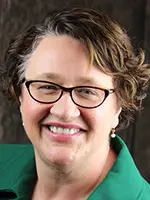
Marketing your business – Marjorie Stieve, Vita Plus
 Click here for Stieve’s PowerPoint presentation.
Click here for Stieve’s PowerPoint presentation.
Custom harvesters are in the driver’s seat when it comes to marketing their services, especially with all the compounding challenges within the dairy industry the last couple of years. Whether an operator is aggressively looking to increase harvest acres or trying to maintain current acreage numbers after some customers have exited the business in the last 12 to 24 months, it is imperative to have a written plan with measurable action items. During her breakout presentation at the Vita Plus Custom Harvester Meeting, Marjorie Stieve explained four areas where custom harvesters can strengthen their brand and grow their business.
Getting your shop in order
Stieve, the Vita Plus marketing services manager, explained a good marketing plan needs to start with an internal situational analysis of the business. This analysis will help you define your brand and help keep all outreach promotions and actions consistent and aligned with the goals of the organization. Some questions to consider during this process include:
- What do you want your harvesting business to be known for?
- What are the values of your organization?
- What differentiates you from your competitors?
- What problems can you help your customers solve?
Remember to engage with your advisors, customers and team to create your brand because it is only as strong as each experience a customer has with it. Insights and feedback from this core group are important to establishing your identity as part of the analysis.
The fields
As part of the marketing plan process, Stieve encouraged harvesters to focus on “the fields,” meaning their customers and prospects. She said you need to always nurture the relationships you have with your customers. Pre- and post-harvest meetings with the producer and the nutritionist ensure everyone understands the key goals for forage quality, field and traffic plans, and billing and payment plans. Consider using these meetings to learn more about what the farm is doing in terms of marketing and communication to help you tailor your efforts as you develop them.
She also highlighted the importance of building and maintaining a prospect list and encouraged attendees to always have at least three names on it. Put regular effort into communicating with those three farmers and identify ways to provide value to them.
 Tools
Tools
The third area Stieve focused on was the “tools” custom harvesters could utilize. One of the areas highlighted was creating a plan for a social media presence. With so many different platforms, this can be overwhelming.
“If you aren’t doing any social media for your harvesting business, start with a Facebook page,” Stieve said.
She encouraged everyone to find that person within their teams or families that likes spending time online. Give them your brand analysis to work from and some guidelines on what content you want to post and share. If you are going to share anything from your customers’ fields during harvest, it is important to get their approval before posting it.
Stieve continued, if you already have a Facebook page or are on Twitter or Instagram, consider building a presence on one more platform, depending on which channels your customers and prospects are also using.
Being a good neighbor
Stieve wrapped up her presentation with the fourth area of stewardship, which she compared to “being a good neighbor” for your customers and our industry. During harvest, help your customers keep the roads clean, operate in a safe manner and maintain good local relationships. Remember, when communicating with consumers face-to-face or online, you must identify and connect on shared values before sharing your expertise on harvesting and our agricultural industry.
| Category: |
Consumer communication Forage Foundations |

